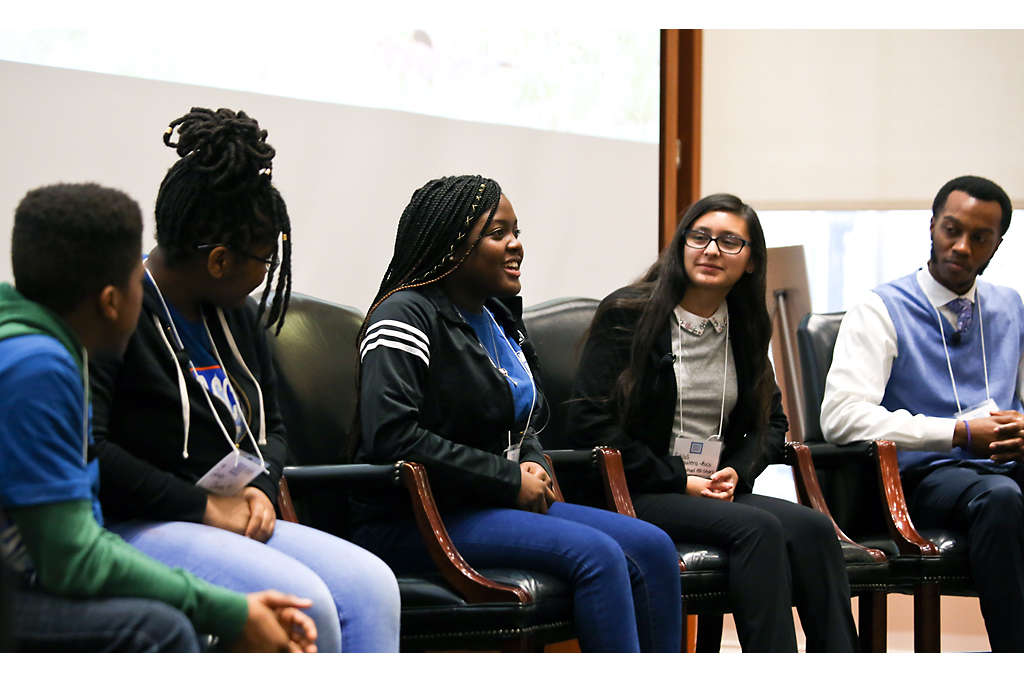Success Stories
It's Time to Magnify Our Focus on the "Magnificent Middle"

Key Takeaways
- The ‘Magnificent Middle’ are students that the NYL Foundation has supported with more than $41 million in grants.
- Kids who begin high school well-prepared are four times as likely to graduate and go on to college.
- The NYL Foundation supports programs to help build stronger academic foundations for middle schoolers during afterschool and summer hours.
- The Remaking Middle School Summit brings together a diverse group of stakeholders dedicated to realigning the learning environment.
- The work of the NYL Foundation and its partners ensures middle school youth have the skills they need to be well-rounded global citizens.
March is Middle Level Education Month, a time when teachers, administrators, and youth development organizations dedicated to advancing the success of middle school students work together to raise awareness of the unique opportunities and challenges facing this group, which the National Association of Secondary School Principals has called the "Magnificent Middle."
Acknowledging and addressing the important needs of students in the middle grades is not only critical to our shared future, but it is an effort that deserves our attention all year long.
Those of us focused on this issue know that there is an overwhelming body of research that suggests students who begin high school “on track” are four times more likely to graduate and go on to college – a trajectory that we know can open doors to future networks, employment prospects, earning potential and success. Despite this knowledge, we continue to see a precipitous decline in school engagement among middle-school aged youth during these critical years. Much of this decline can be attributed to the fact that this age group is often misunderstood, their needs and assets often over-looked, and the available resources – both public and private – to support middle school education and youth development are dramatically less than other investments along the education continuum.
Fortunately, there are several groups, including, Youth-Nex at the University of Virginia’s Curry School of Education and Human Development, Altria Group, the Association for Middle Level Education, Gallup and the New York Life Foundation, working to shine a spotlight on the “Magnificent Middle.” Collectively, we are focused on realigning the learning environment to better reflect what works for young people, improving coordination among stakeholders connected to in- and out-of-school time (OST) hours and attracting more funding and resources for the middle grades. The Remaking Middle School Summit, which took place February 12-13 in Washington, D.C., was a validation of why this work is so important.
The convening brought together 150 attendees from across the country with various backgrounds including researchers, teachers, school administrators, OST providers and intermediaries, policymakers, funders and most importantly, students. The event was designed to share and study the science of young adolescent development and learning; to nurture a national community of diverse stakeholders who are committed to a vision to reframe and improve learning experiences and outcomes for youth in the middle grades; and to work collaboratively on building an action agenda to make tangible change and progress.
Teams will focus on key priority areas that emerged from the Remaking Middle School Summit, such as, community and family engagement, school culture and climate, student voice and agency, reframing the middle grades conversation, teacher learning and professional development, teaching and learning, and translating research to practice. Over the coming months, these teams will collaborate using virtual workspaces to identify, explore and create concrete and tangible solutions that can be implemented to remake middle school learning experiences for youth in a real way. The design teams will also remain fully centered on the voices of the students, who shared with Summit attendees that they want to feel that they have a say in their education.
Although we have made important progress, our work is far from complete. The middle school structure in many cities is antiquated and doesn’t reflect what the research tells us works best for young people. Better alignment of stakeholders, both in the in-school and out-of-school time space, and improvement of the fragmented funding system are both critically needed. Most important, students need more opportunities to engage and have their voices heard and integrated into the enhancements for middle school.
The middle school structure in many cities is antiquated and doesn’t reflect what the research tells us works best for young people.
Though we were focused on the “Magnificent Middle” this March, the New York Life Foundation and our partners work throughout the year to ensure middle school youth have holistic learning experiences that develop the 21st Century skills they need for workplace success and the social-emotional skills to be well-rounded global citizens.
Marlyn Torres is senior program officer of the New York Life Foundation, which sponsored the Remaking Middle Summit and has focused its funding on supporting middle school youth since 2014. To date, the New York Life Foundation has given over $41 million in grants to this focus area.
RELATED CONTENT
Media contact
Lacey Siegel
New York Life Insurance Company
(212) 576-7937
Lacey_S_Siegel@newyorklife.com
